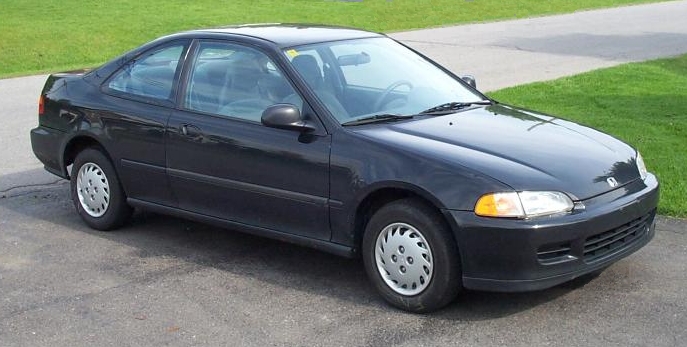
On the 1992-1995 Civic, trim levels CX, DX and VX came equipped with manual steering, while the higher-spec LX, EX and Si had power steering as a luxury feature. 25 years later, when most of these cars are modified and few are left as humble commuters, the manual steering is more desirable; when the car has less than 100hp, maybe you notice the power loss from a power steering belt just a little bit more. Manual steering is a pretty common swap on modified Hondas because many think it has a better weight and feel to it. If you’re planning an engine swap, a manual steering conversion makes even more sense, since you don’t have to attach a power steering pump, run a belt to it, and run hydraulic power steering lines to the rack and pinion. The minimal amount of weight reduction is a bonus as well.
Frequently, people will simply loop the power steering pressure line right back into the pump. This is the worst of both worlds; you still have the weight and parasitic power loss of a power steering system, without any of the benefits thereof. The power steering rack is also geared differently than the manual rack, so steering weight will be even heavier than a regular manual steering rack and there’s no guarantee the steering feel or response would actually improve; there’s really no benefit to taking the easy way out like that. Doing it the correct way with a manual steering rack (available here) is a little more involved.
The biggest hurdle when putting a manual steering rack onto your factory-power EG is the mounting bushing on the passenger side. Because there’s no fluid running through it, the body of the manual steering rack is narrower than the power rack, so the mounting points opposite from the pinion tower are a little different. There are three ways to overcome this:
- Wrap a power steering rack bushing around the manual steering rack, then use the power steering rack bracket. This is ill-advised because the two bushings stacked on top of each other will, at minimum, make a lot of noise. The more likely problem is that they will flex too much, which can lead to the steering binding up.
- Drill out the mounting holes of the manual steering mounting bracket so it will bolt up to the power steering subframe and use washers on the mounting bolts to make up for the loss in bolt pressure on the bracket. This works, but you still have to order a manual steering rack mount bushing, so if you’re going to do that, you might as well:
- Order a front sway bar bracket for a 1990-1993 Honda Accord (Energy Suspension part number 9.5106G, available here) and use that as the steering rack mounting bracket. It just so happens to fit perfectly over the steering rack, and the bolt holes are elongated to allow for the sway bar to flex, so if you use washers this will allow you to use the bolt holes on the power steering subframe.
Next up, you need a dust cover or spacer that goes over the pinion tower of the manual steering rack before the body plug. The stock steering shaft will connect to the input shaft of the manual steering rack, and the input shaft ends at the right place as well. However, because the hydraulic component is missing, the pinion tower itself is shorter, leaving more of the input shaft exposed. This is an OEM Honda part that you might be able to find at a junkyard but might also have to order from a Honda dealership. Without the spacer, the floor panel that the steering shaft goes through will not remain in place, which means water or road debris would get into your footwell.
The power and manual steering racks both have the same driver’s side mounting points, input shaft, overall length, and use the same outer tie rod ends. You should still replace the outer tie rod ends any time you replace the steering rack anyway; it’s the same amount of labor, and the tie rod ends are a wear item that need to be replaced as part of general maintenance (this goes for any car where the steering rack is being replaced, not just conversions like this). If you’re more of a visual learner, there’s also a very helpful video tutorial available here.
Our business began nearly 30 years ago with steering components, so if you’re still unsure what’s the best solution for your vehicle, feel free to contact BuyAutoParts for knowledgeable assistance in getting the best replacement steering parts. We carry both brand new and fully remanufactured items from quality name brands like Borgeson, Unisteer, ZF, Duralo and more, all backed by a minimum one-year warranty (sometimes longer!) and US-based customer service. Our parts professionals are here and ready to help!
See here how to do this to a Fox-Body Ford Mustang
See here how to go the other way and add power steering to your classic car





